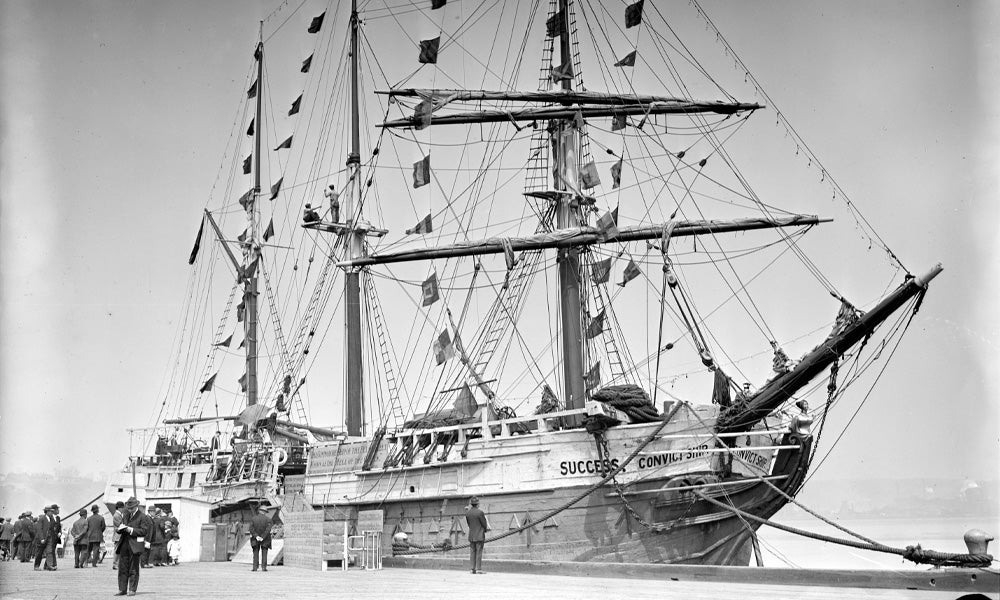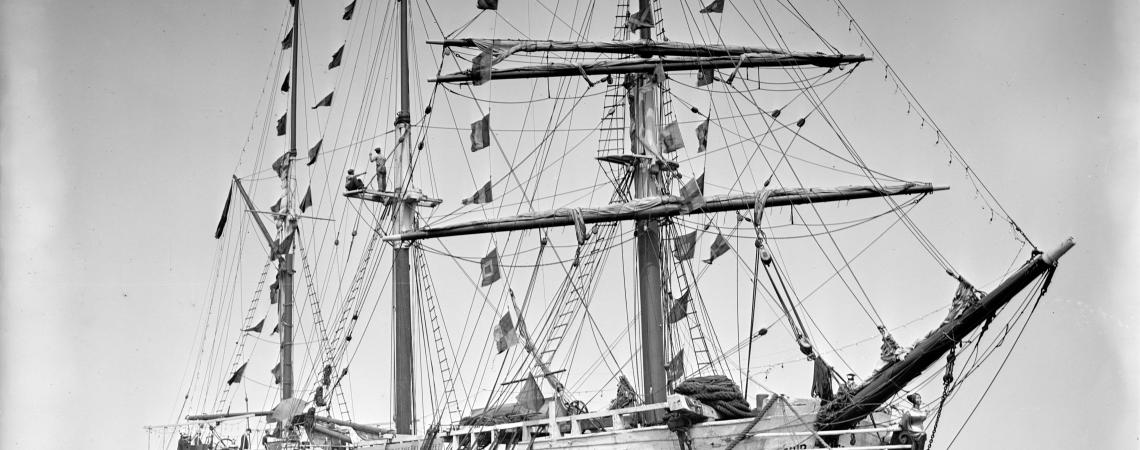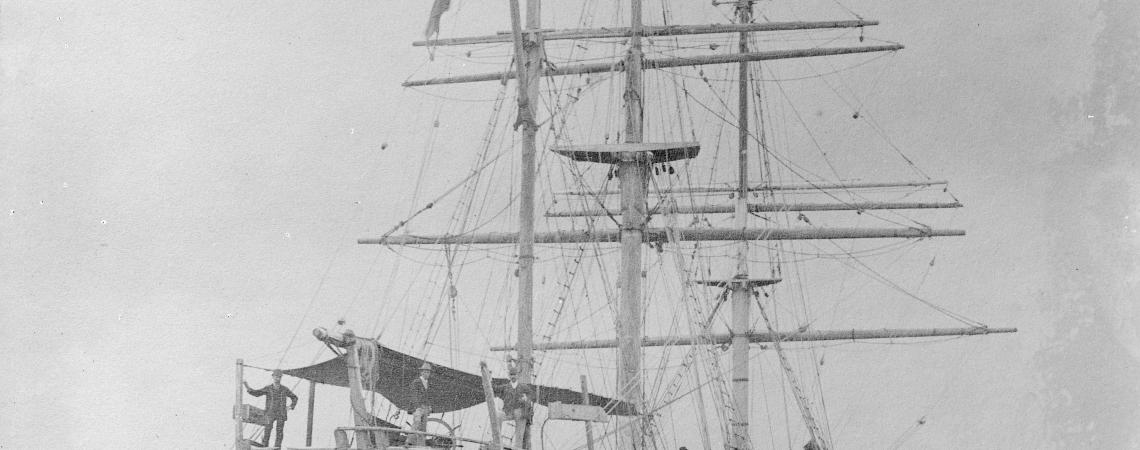There has likely never been a more ironic name for a prison ship than Success. The vessel — which was a Lake Erie icon for more than a decade — was successful in another sense: She was the focus of the longest and largest nautical hoax in the history of the Great Lakes, and possibly all of North America.
Measuring 135 feet in length and having three masts, Success was built in 1840 in India during the days of sail. Early in her long career, she made trips transporting immigrants from England to Australia, then functioned for several years as a prison ship, anchored in Sydney’s Woolloomooloo Bay. But it was when the ship’s owners put her up for sale that Success sailed into nautical history.
Success was not only converted to a “convict ship,” complete with all her ghastly accoutrements, but was also the “oldest and most historic ship afloat.”
A group of promoters purchased the ship, planning to sail her around the world for the public to board and tour — for a price, of course. But before her debut, they believed Success needed a bit of refurbishing.
They brought aboard some unusual equipment: handcuffs, leg irons, branding irons, metal straightjackets, a triangle-shaped whipping post, even a medieval torture device known as an iron maiden.
And they painted on the sides of the hull, in large black letters, the words “Convict Ship.”
None of the apparatuses had ever been on the ship previously, let alone used, but no matter. The promoters even went so far as to erroneously add half a century to the ship’s age. So now, Success had not only been converted to a “convict ship,” complete with all her ghastly accoutrements, but was also the “oldest and most historic ship afloat.”
The public ate it up, no questions asked.
Sailing from England, Success arrived in Boston in 1912 after a long, slow 99-day transatlantic trip — after which her captain for the voyage complained, “She sails like a bale of hay.” She toured major U.S. cities along America’s east and west coasts and the Gulf of Mexico, then sailed up the Mississippi, stopping at major ports along the way. Next, making her way up the Ohio River, she visited Cincinnati, Wheeling, and Pittsburgh in 1918 and 1919. In 1923, Success entered the Great Lakes, where she toured for the next five years.
By 1924 — and despite protests from the Australian government about its entirely made-up history — Success was such a popular attraction at Toledo that local papers reported, “Every day since its arrival here, it has been visited by good-sized crowds.” Other Lake Erie ports included Lorain, Cleveland, and Sandusky, where she often docked for weeks at Cedar Point amusement park.
Her owner in 1925, a Captain David H. Smith, described his ship as “a tremendous paying game.” A conservative estimate of the ship’s income during the 1920s was $450,000 annually, equivalent to many millions in today’s dollars.
Unfortunately, the good times were not to last. With the stock market crash of 1929, the largesse of the Roaring ’20s quickly ended, ushering in the Great Depression. During the 1930s, many Americans struggled to make ends meet, let alone have money enough left over for entertainment. The crowds dwindled, then eventually stopped coming altogether, and Success fell out of popularity and into disrepair.
Purchased by a businessman in Port Clinton, Ohio, in the fall of 1945, the decrepit old hulk was being towed from Cleveland to Port Clinton when she ran aground and stuck fast on a sandbar about a half-mile from shore off the Port Clinton swimming beach. There she remained mired until the evening of July 4, 1946, when vandals set her afire just to watch her burn.
More than 1,700 shipwrecks lie at the bottom of Lake Erie, only 277 of which have been located. Success is one of those that have been identified, with what is left of her wooden keel, ribs, planking, and metal parts lying in just 8 to 10 feet of water. Today, divers are welcome to investigate Success and 32 other shipwrecks in Ohio’s Lake Erie waters.
Chip Gross is Ohio Cooperative Living’s outdoors editor. To learn more about ghost ships and their locations, visit www.ohioshipwrecks.org.











